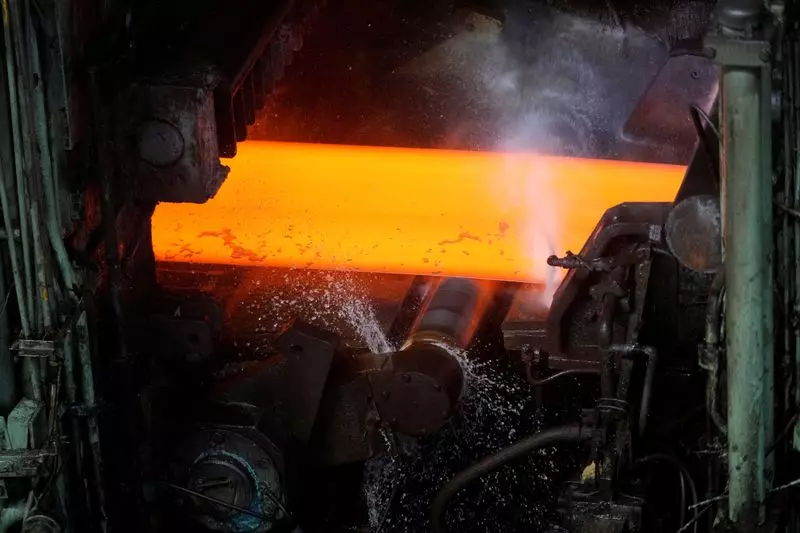The steel industry in China is currently facing challenges beyond U.S. tariff threats. Despite President Joe Biden’s proposal to triple tariffs on Chinese steel imports, the impact is largely seen as symbolic. With steel consumption in China expected to shrink again this year due to a prolonged property crisis and slowing infrastructure demand growth, the industry is grappling with internal issues that overshadow external tariff threats. The China Metallurgical Industry Planning and Research Institute has forecasted a 1.7% drop in steel demand this year following a 3.3% decline in 2023.
Impact of Exports
While China’s steel exports reached their highest level in years in 2023, only a small fraction was shipped to the United States. The main destinations for Chinese steel exports are Japan, South Korea, and Middle Eastern countries, minimizing the potential impact of Biden’s proposed tariff hike. Chinese steelmakers and traders are set to match or surpass last year’s export levels, driven by low local prices. However, the surge in Chinese steel exports has raised concerns in other countries, leading to anti-dumping duties in India and Mexico and tariff proposals in Thailand and Brazil.
Despite Beijing’s support for the steel sector through equipment upgrades and consumer incentives, the industry is still grappling with reduced consumption from the property sector. Construction demand is expected to decline this year, offsetting the marginal growth in infrastructure-led steel consumption. Beijing’s efforts to cut steel production to reduce supply and curb carbon emissions may not be sufficient to address the industry’s overcapacity and dwindling demand. The need for leading producers to adjust production based on demand has become a pressing issue for the industry.
Chinese steel exports have surged in recent months, with March exports hitting a six-year high. The first-quarter total exports stood at 25.8 million tons, driven by higher global demand despite a contraction in overall exports from China. While the weaker yuan against the U.S. dollar has boosted export competitiveness, uncertainties loom over trade frictions and potential output limits imposed by Beijing. Global steel demand is projected to increase this year, creating opportunities for Chinese steel exports, but challenges remain with growing overseas supply and regulatory uncertainties.
The steel industry globally is in a state of flux, with the ongoing trade tensions and domestic challenges posing significant risks to the future of the industry. While steel demand is expected to rise globally, internal dynamics within China and external factors such as trade frictions and regulatory uncertainties will shape the industry’s trajectory. Leading producers must adapt to changing market conditions and demand patterns to navigate the complex landscape of the global steel industry. In an increasingly interconnected world, the steel industry’s fate hinges on a delicate balance of supply and demand dynamics, regulatory measures, and global trade dynamics.

